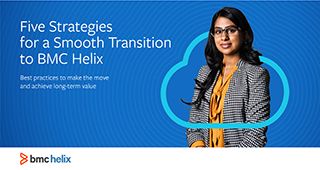Implementing a software-as-a-service (SaaS) solution takes a sizeable investment of time and money. But it’s definitely an investment worth making. As I pointed out in my previous blog, “5 Critical Success Factors for Organizational Change,” SaaS offers numerous advantages over on-premises systems. Additionally, SaaS accelerates your evolution from a traditional business to an Autonomous Digital Enterprise.
But most people have become comfortable with their current conventional tools and processes. They often resist replacing the old way of doing things with a new way. A few may even attempt to undermine efforts to change things.
So what’s the best way to ensure that resistance to the new SaaS solution doesn’t slow you down or even derail your journey? First, you need to persuade people to embrace the new solution by effectively communicating the what, the why, and the how surrounding the change. Second, you must clearly communicate the benefits the solution offers to each individual affected by the change. That means painting an appealing picture of where each stakeholder fits into the desired future state.
Read on to learn how to drive SaaS success with an effective communication strategy.
Develop a Communication Strategy
Change management experts constantly stress the importance of effective communication in overcoming resistance to change. With that in mind, include the development of a communication strategy early in the planning and design of the new solution. The strategy must clearly define:
- What the SaaS solution is
- Why it’s essential to long-term business success
- What senior leaders have identified as the high-level business objectives
- How the change benefits each stakeholder group
- Who will be most affected by the change
You must develop consistent messaging around each of these five key areas and communicate that information regularly to stakeholders.
One-way communication, however, isn’t enough. When stakeholders have a say in the new way of doing things, they are more likely to buy into the change and adopt the new processes and tools. Consequently, your approach must facilitate two-way interactions that capture user input and feedback. You must also demonstrate that the project team is listening to stakeholders’ wants and needs and incorporating them into the design, implementation, and refinement of the SaaS solution.
Align Communication with the SaaS Rollout
Breaking your communication strategy into phases makes it more manageable and helps ease people’s concerns over what to expect. We recommend a three-phased approach that encompasses developing a detailed communication plan, employing a variety of activities from pre-implementation through initial rollout, and measuring and publicizing successes post-implementation.
Phase 1—Planning
An effective communication plan aligns with high-level business objectives for the SaaS solution and serves as a roadmap for communication activities. Your plan should:
- Define objectives and expected outcomes for the future state
- For each stakeholder group spell out what will stay the same, what will change immediately, and what will change over time
- Establish key messaging to drive content development for communication campaigns targeting stakeholders
Phase 2—Ramping Up and Rolling Out
This phase involves the many communication activities that will occur during the transition from pre-implementation through early rollout. Activities include, but aren’t limited to:
- Disseminating clear and concise messages that explain the desired future state and expected outcomes
- Keeping stakeholders up to date on major milestones reached and next steps
- Educating stakeholders on what to expect and explaining the value that the solution will deliver not only to the enterprise but to everyone affected by the change
- Interacting with stakeholders through multiple channels, including online channels such as email, text, website, and electronic newsletters, and offline channels such as show-me sessions, workshops, educational opportunities, and Q&A sessions
- Developing training and education offerings that give people the skills they need to excel with the new solution
- Agreeing on metrics that measure success and publicizing successes along the way
Phase 3—Ongoing Monitoring and Measurement
In phase 3 you continue to measure post-implementation progress, identify and communicate accomplishments, and search out additional ways to exploit the capabilities of the SaaS solution to maximize return on investment. Efforts in this phase include:
- Ongoing measurement and communication of change effectiveness
- Identification and communication of gaps and challenges that need to be addressed
- Continued education that keeps employee skills sharp and increases job satisfaction
- Celebrating successful outcomes and milestones
Tap Resources that Can Help
Fortunately, there are numerous resources available to help you develop and execute your communication strategy. Here are three examples:
- Your corporate communications team typically plays a significant role in facilitating change processes. Take advantage of their communications expertise to understand the best ways to keep stakeholders in the loop and enthusiastic.
- Your marketing team may have multichannel marketing tools that you can use to automate delivery of email and SMS messages and provide a range of opportunities for engaging people—both online and offline—and tracking their engagement levels.
- SaaS vendors typically provide both tools and service offerings to help customers create and execute a sound strategy. Tools include templates for a communication plan, with outlines, trackers, and calendars. Engage with vendors at the level that best suits your situation. You can take a do-it-yourself approach leveraging the vendor’s tools. You can turn over specific aspects of the communication effort to the vendor. Or you can bring the vendor in as a major participant in the development and execution of the communication strategy.
Unleash Your Creativity
BMC customers have come up with a number of innovative and compelling communication mechanisms to stoke enthusiasm and promote adoption. Here are a few examples:
- Personalizing messaging according to the interests and needs of each stakeholder group and reaching people through the channels they prefer
- Establishing user forums to capture the end-user perspective and incorporate it into the user interface and other aspects of the solution
- Cultivating champions who passionately embrace the change and influence their peers’ attitudes toward the new solution
- Generating buzz with unexpected and fun pop-up events in cafeterias, breakrooms, and other areas where employees gather, or in virtual meeting places and communication hubs when in-person forums aren’t available
- Creating a communication central landing page for all communications and related links
- Offering education and training in a variety of formats based on stakeholder needs
With creative, effective communication you’ll transform resistance to change to enthusiastic reception of change, which translates into success that you can measure and demonstrate.
If you need assistance with your transition to SaaS, please fill out our form and a BMC Customer Success expert will reach out to get started.
Five Strategies for a Smooth Transition to BMC Helix
These postings are my own and do not necessarily represent BMC's position, strategies, or opinion.
See an error or have a suggestion? Please let us know by emailing blogs@bmc.com.







